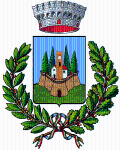Descrizione
Cetamura o Civitamura è un luogo nel quale si stima un’importante presenza umana dall’età del bronzo finale e comunque dall’VIII sec a.C., segnalata da numerose abitazioni e attività artigianali legate alla ceramica, ai laterizi e alla lavorazione dei metalli (le attività potrebbero incrociarsi con quelle di epoca romana).
Il complesso si distribuiva su un esteso pianoro e su terrazzamenti artificiali degradanti verso ovest e vi era una cortina difensiva realizzata in pietre squadrate e non , murate a secco.
E’ nell’età arcaica che Cetamura registra un notevole aumento demografico con il probabile emergere di un gruppo familiare aristocratico egemone che dà luogo alla formazione di un potentato rurale. Questo spiegherebbe le evidenze di una residenza palazzo in località Pian Tondo e la necropoli del Poggione ( distanti 800/1000 metri), quindi la comunità gentilizia etrusca che occupava un vasto territorio fino all’attuale Villa a Sesta. Cetamura che è toponimo di origine latina, fu anche “ oppidum” (città fortificata) in età ellenistica ( IV/I a.C.) per diventare un villaggio fino al I sec. d.C. e risultare invece desertata o marginale per molto tempo e fino al X secolo. Nel Cartulario della Berardenga la prima attestazione è del 1071 (Civatamuri), poi ritroviamo altre 10 citazioni fino al 1216 “ in curte de Civita mura”, nel 1140 è descritta come “Civitamuro” Castello e corte. Alla fine del XII secolo in Cetamura fu avviata una primitiva organizzazione comunale con la nomina di un Console. Nel 1320 C. era un comunello curia nel catasto senese, furono censiti un “castrum” e 17 case, e con probabilità Scandelaia rappresentava con la sua torre un punto protettivo e di avvistamento e forse ricompresa nel calcolo degli edifici relativi al Castello. Nel 1340 C. risulta nel Vicariato senese della Berardenga con il toponimo “ Civitamurra”, il Repetti ci racconta dell’esistenza di una chiesa intitolata a Santa Maria.
Oggi Cetamura con la sua struttura ex poderale, mantiene una sua nobiltà architettonica, una pianta ad elle nelle cui mura sono incorporati i resti medievali e l’emergenza architettonica della porta del Castello con la sua figura ad arco e le pietre squadrate alla perfezione a perenne ricordo di una grande storia e con un panorama impareggiabile su gran parte della Berardenga.
English version:
Cetamura or Civitamura is a place where there is believed to have been a significant human presence since the bronze age, and there is evidence of settlement at least as early as the 8th century B.C. in the form of numerous dwellings and manual activities including pottery, brickmaking and metal working (activities that may have been present since the Roman era).
The complex is distributed over a broad plateau with artificial terracing that descends towards the west, and there was once a defensive dry-stone wall of square and irregular stone blocks.
In the archaic age, Cetamura saw remarkable demographic growth, with the likely emergence of a hegemonic aristocratic family group that gave rise to the formation of a rural potentate. This would explain the evidence of a palazzo dwelling in Pian Tondo and the necropolis of Poggione (around 800/1000 meters apart), and the aristocratic Etruscan community that occupied a vast area stretching to what is now Villa a Sesta. Cetamura, a Latin toponym, was also an “oppidum” (fortified city) in the Hellenistic age (4th-1st centuries B.C.) and became a village up to the 1st century A.D., after which it seems to have been deserted or insignificant up to the 10th century. In the Berardenga Cartulary, the first mention of it is from 1071 (Civatamuri), then we find another 10 citations up to 1216 “in curte de Civita mura”, and in 1140 it is described as “Civitamuro” Castle and Court. At the end of the 12th century, a primitive community was organized in Cetamura with the naming of a Consul. In 1320 it was listed as a “common”/curia in the Sienese land registry, with a “castrum” and 17 houses, and it is likely that Scandelaia with its towers was a lookout and protection spot perhaps included among the buildings associated with the Castle. In 1340 C. it was part of the Sienese Vicariate of Berardenga with the toponym “Civitamurra”. Repetti tells us of the existence of a church dedicated to Santa Maria.
Today, Cetamura, with its ex-farmhouse/villa structure, still maintains a certain architectural nobility: an L-shaped layout within the walls of which medieval vestiges are incorporated, and the large Castle doorway with its arched shape and perfectly-square stones stands as a perpetual reminder of its grand history. The panorama overlooking much of the Berardenga territory is stupendous.
Modalità d'accesso
sempre aperto
Indirizzo
Punti di contatto
Ultimo aggiornamento: 4 marzo 2024, 12:51

